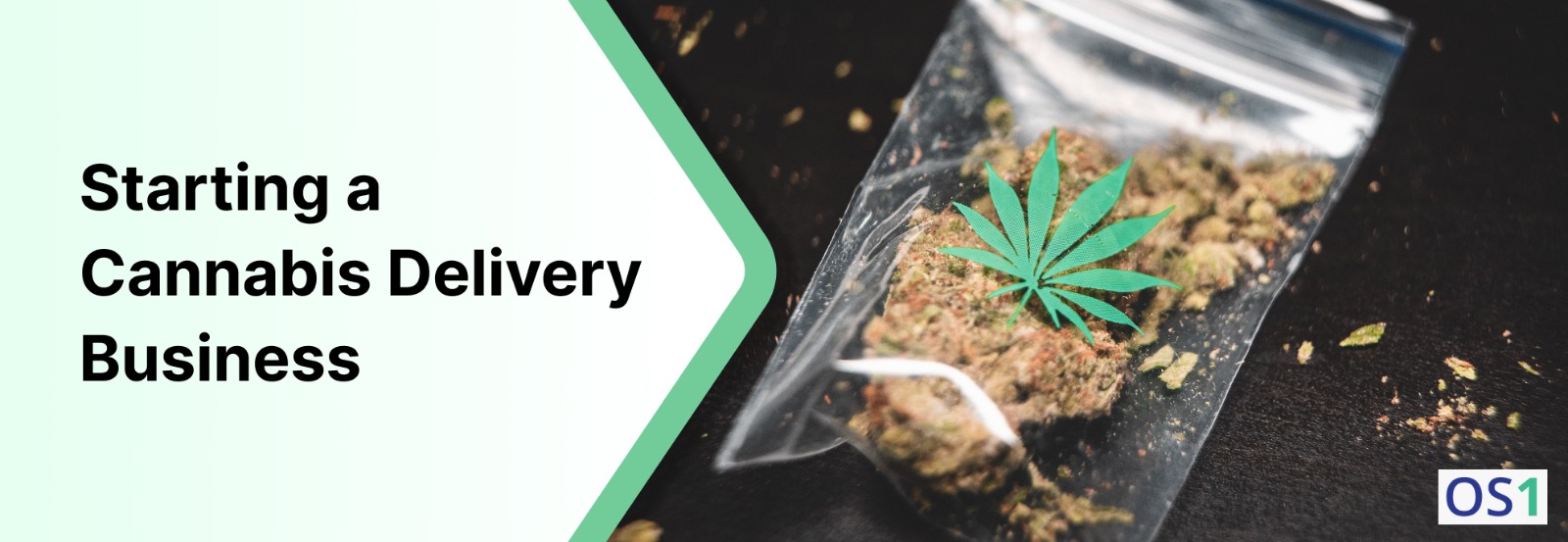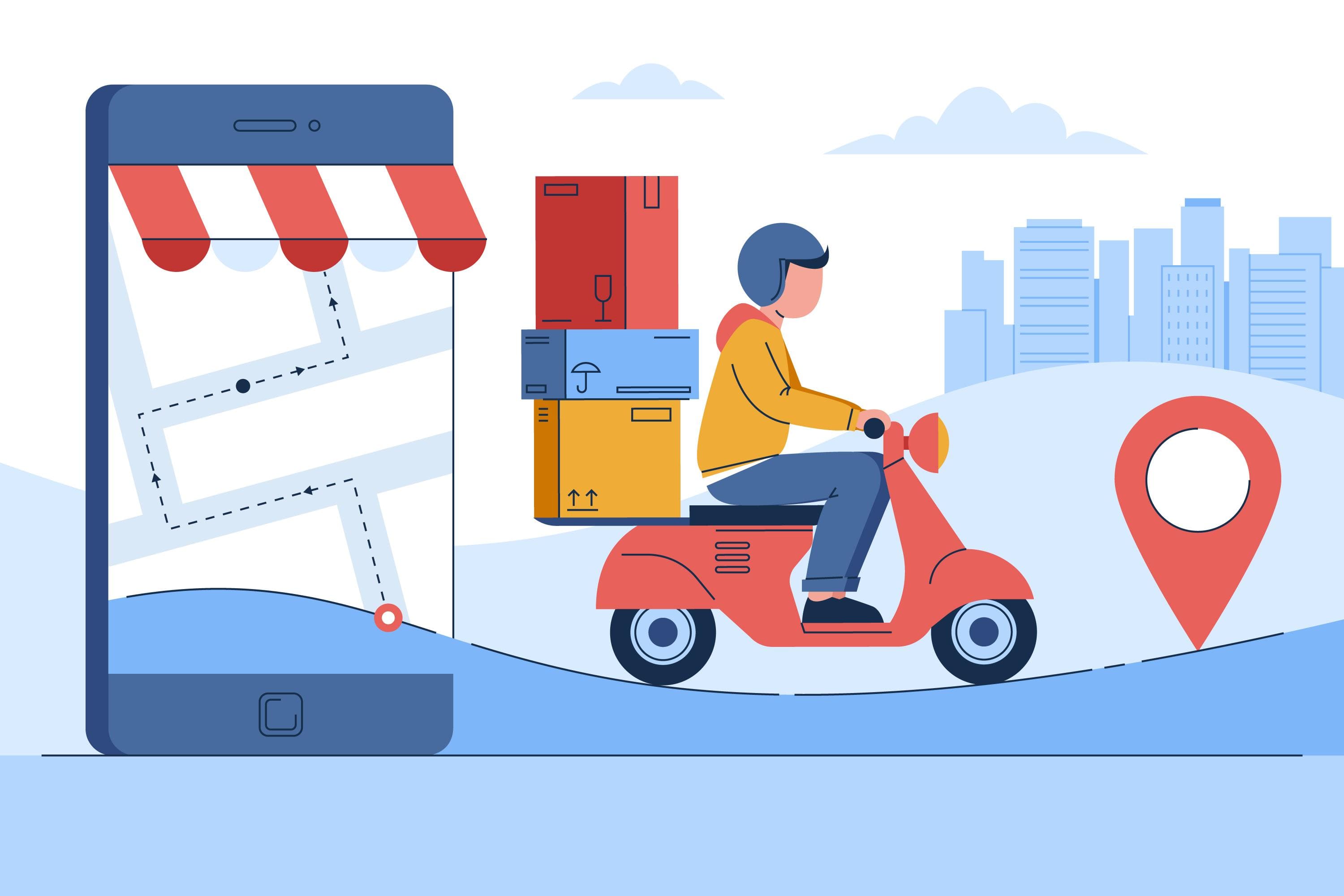The legalization of cannabis in the US has opened up rapid and substantial business opportunities....
Cannabis Business: Everything you need to know!
The US Cannabis Industry has shown an upward growth trajectory in the past few years and is expected to expand by a CAGR of 14.2% from 2023 to 2030.

Cannabis Delivery Business: A Brief Overview
The cannabis delivery business covers the entire journey, from order inception to final delivery. It starts with order capture, moves through intelligent order processing, and includes matching each order with the suitable delivery partner and vehicle. It involves planning the most efficient delivery routes to ensure prompt and secure delivery to the final destination.
This comprehensive cycle is the backbone of a successful cannabis delivery business, ensuring seamless and secure operations at every step. While the fundamental delivery framework has similarities with any other delivery operation, there are specific add-on steps because of the legal and operational compliance of cannabis.
Before delving into the dispatch-to-delivery framework of the cannabis cycle, here are some interesting facts about the cannabis industry worth exploring.
Facts About the US Cannabis Industry
- California stands as the first state in the US to legalize medical Cannabis.
- Washington and Colorado emerged as the first ones to legalize Cannabis for recreational purposes.
- Delaware, Minnesota, and Ohio have joined the ranks in 2023 as the latest additions to the list of states legalizing Cannabis for recreational purposes.
- 38 states, three territories, and the District of Columbia have legalized medical use of Cannabis.
- 24 states, two territories, and the District of Columbia have legalized Cannabis for non-medical adult (recreational) use.
- By 2027, Ohio will become one of the top six contributors to the Cannabis Market.
And many more!
Phases of Cannabis Delivery Cycle: From Order to Delivery
The cannabis delivery cycle operates through distinct phases, each integral to the next, creating a cohesive chain where the success of one phase significantly influences the adjacent phase.
PHASE 1: Order Capture
This involves aggregating orders from various sources into a unified platform, consolidating them regardless of their origin, whether manual, CSV, ERC, or Excel. The aim is to centralize all incoming orders into a singular, cohesive space for streamlined management. This phase serves crucial roles in identifying:
Order Quantity Assessment
By consolidating orders from diverse sources, it provides a clear overview of the total quantity of orders awaiting delivery. This understanding is fundamental for logistics planning and resource allocation.
Delivery Commitment Identification
It helps recognize orders with specific delivery commitments or requirements. Whether it's urgent delivery, time-sensitive requests, or specialized delivery conditions, this phase helps flag and prioritize such orders for timely fulfillment.
PHASE 2 : Order Process
This phase involves processing orders, focusing on address details and time sensitivity. It includes swiftly handling all customer-provided information to gain comprehensive insights into their delivery expectations. With successful execution of this phase, delivery businesses can create :
Batch Formation for Delivery
It involves creating delivery batches by grouping orders with similar delivery locations. This streamlines the delivery process by optimizing routes, consolidating deliveries to nearby areas, and enhancing delivery efficiency by covering multiple orders on a single route.
Delivery Plan Formation
This phase generates a delivery plan by utilizing pre-defined configuration rules or specific instructions from customers. It ensures adherence to any specialized requirements and enables efficient organization of the delivery process.
PHASE 3 : Order Dispatch
A rapid dispatch plan is generated for all impending deliveries in this phase. It involves efficiently organizing route plans to facilitate multiple deliveries within shorter time frames and optimizing the delivery process for increased efficiency. This phase helps dispatchers achieve:
Optimal Resource Allocation
It allocates order dispatch to the most suitable fleet and resources, enhancing overall resource efficiency by ensuring the right match between orders and available resources.
Route Optimization
Enabling en route planning for the most convenient, shortest, and most efficient routes, this phase optimizes delivery time and cost, ensuring timely and cost-effective deliveries.
PHASE 4: Order In Transit
This phase encompasses the stage when the order is on its way to delivery. During this time, dispatchers and customers eagerly await the order's final destination. You can expect:
Reducing Customer Inquiries
A unique tracking link allows customers to monitor the progress of their orders independently. It decreases the need for them to contact customer support repeatedly, asking for updates on their order's whereabouts. Access to live tracking information makes customers feel more informed and less inclined to make unnecessary inquiries.
Proactive Management
Live tracking lets dispatchers monitor the shipment's progress. This proactive approach helps them identify and mitigate potential delays or issues along the delivery route. With this information, dispatchers can take the necessary actions to prevent or minimize disruptions, ensuring timely deliveries.
PHASE 5: Order Delivery
That final phase marks the completion of the entire delivery cycle, where the placed order successfully reaches the customer. There are certain important aspects that needs to be considered during this phase:
Recipient Verification
Before delivering the order, verifying the recipient's identity or confirmation is essential. This step ensures that the order is handed over to the right person, preventing misdeliveries or errors in the delivery process. Verifying the recipient helps in maintaining accuracy and customer satisfaction.
Proof of Delivery (POD)
Obtaining proof of delivery is crucial to confirm that the intended recipient has successfully received the order. This can involve various methods, such as digital signatures, photographs, or confirmation emails. A digital acknowledgment serves as evidence that the order was delivered and received, which helps mitigate any discrepancies or disputes that may arise after the delivery.
Related: Guide to Start a Cannabis Delivery Business
Breakdown of Common Challenges in Cannabis Delivery
Adhering to legal compliance and regulations
Delivering cannabis follows strict rules that vary by state. Keeping up with these rules, which can change often, is vital to run a delivery service. Getting the correct licenses is a must. This means constantly staying updated and ensuring everything you do follows the law. It's a detailed process that needs constant learning and adapting to keep up with the rules.
Accommodating to Shorter Delivery Windows
Meeting narrowed delivery windows, especially for medical cannabis orders, can be crucial. When these orders require quick delivery, it becomes challenging for delivery partners if the urgency needs to be marked. Identifying these urgent orders is essential for delivery partners to prioritize and expedite them accordingly. With clear markings or indications, it can be easier for delivery teams to distinguish these time-sensitive requests from others, potentially causing delays for critical medical needs.
Adapting to Advanced Technology
Implementing efficient dispatch management software or technology that complies with regulatory standards can be challenging. Finding suitable tech solutions integrating compliance features can streamline operations but requires careful selection. Dispatchers often struggle to find a customizable, agile and scalable dispatch management solution that can complement the dynamic requirements.
Selecting the Ideal Route
Making sure cannabis deliveries take the best routes can be challenging. There are many things to consider, like the law, traffic, and what customers want. It's a challenge to figure out the quickest routes that follow the rules and get deliveries there on time. This means finding the most efficient paths while sticking to the regulations and ensuring things arrive when they should.
Recipient Age and Identity Verification
Ensuring customers are the right age and who they say they are during delivery is super important, especially in places with strict age rules. Making sure this verification process is robust without slowing things down too much is tricky. It's a challenge to balance being thorough with keeping things moving efficiently. This means finding ways to check age and identity effectively without causing delays in the delivery process.
Reasons to Choose Cannabis Dispatch Management Solution
Accelerating & Scaling Order-to- Dispatch Process
Automated batching streamlines the order-to-dispatch process, expediting the delivery cycle by swiftly organizing orders based on delivery timelines. Customizable workflows within this system allow for tailored handling of specific delivery requirements, optimizing dispatch plans considering factors like urgency, location, and product types. This automation accelerates order processing and ensures efficient and timely dispatches, adapting flexibly to evolving delivery needs without disrupting the workflow.
Balancing Compliance & Efficiency for Route Generation
To efficiently complete orders, designing an optimal route involves carefully considering various factors, including legal compliance, route restrictions, traffic conditions, vehicle capabilities, and driver efficiency.
The dispatch management solution enables mapping out paths that adhere strictly to legal regulations concerning cannabis transportation and navigating around any restricted zones or areas. It also considers real-time traffic data to avoid congested routes and ensures that chosen paths align with the vehicle's capabilities, considering size, capacity, and specialized handling requirements.
Maximizing Profitability & Resource Utilization
The dispatch management platform in cannabis delivery operations is vital for continually enhancing resource efficiency and overall profitability. Leveraging this software enables dispatchers to fine-tune resource allocation, fleet management, and operational costs throughout the entire delivery cycle.
By optimizing routes, allocating resources effectively, and leveraging real-time data, the platform ensures deliveries are swift, cost-effective, and compliant with legal constraints. Through streamlined processes and automation, it accelerates delivery times, heightens customer satisfaction, and identifies areas for cost reduction.
Enhancing a Better Post-delivery Experience
By leveraging the Proof of Delivery (POD) and recipient verification checklist features embedded within a dispatch management platform, drivers and customers gain access to a digital confirmation validating the successful completion of delivery. It provides concrete evidence that the package reached its intended recipient, fostering confidence and trust between both parties.
Ultimately, utilizing POD and recipient verification functionalities ensures smoother deliveries and significantly contributes to a superior post-delivery experience, resolving discrepancies efficiently and fostering increased customer trust and satisfaction.
DispatchOne | Empowering Cannabis Delivery Business
DispatchOne is a progressive, adaptable, and agile dispatch management solution specifically crafted to empower cannabis delivery operations in optimizing, streamlining, and broadening their reach within potential markets. The comprehensive dispatch software provides tailored add-ons, ensuring flawlessly executed deliveries, all while offering scalability and adaptability to meet the unique needs of each business.
With DispatchOne, you can expect:
- Consolidated dashboard to plan, monitor and analyze all the incoming orders at one place.
- Automated Dispatch to expedite the order to delivery cycle along with the quick generation of dispatch plan.
- Route planning to map and optimize delivery routes to maximize multiple deliveries on a single route.
- Customizable & configurable workflows to support varied delivery specifications.
- Tailored Checklists for Age Verification and Proof of Delivery (POD) Post-Successful Deliveries.
- Insight -driven performance reports to maximize resource efficiency and map growth-led opportunities.
And many more!
Get in touch with our DispatchOne experts to learn more about the benefits in detail!
Cannabis Delivery Business| Frequently Asked Questions
How to start a Cannabis Delivery Business?
Here's a structured checklist to get started with Cannabis Delivery Business.
- Funding and Market Research: Secure necessary funding and conduct comprehensive market research to understand the industry, customer demands, and competition.
- Legal Compliance & Licenses: Thoroughly understand and comply with all legal regulations governing cannabis delivery in your state or region. Obtain all the licenses and permits necessary for a legal cannabis delivery service.
- Security Measures: Implement robust security measures for online transactions and physical product handling to ensure the safety and confidentiality of transactions and deliveries.
- Staffing and Training: Hire and train reliable and knowledgeable staff, including delivery personnel, who understand the legal and operational aspects of cannabis delivery.
- Continuous Adaptation: Stay updated with industry trends, regulations, and customer preferences, continuously adapting your business strategies to remain compliant and competitive.
- Choose Technology: Make your cannabis delivery business successful by integrating with a dispatch management solution to automate your order to dispatch process.
By following these steps systematically, you can establish a solid foundation for a successful and compliant cannabis delivery business.
Why is Cannabis not legalized in all states of the USA?
The legalization of cannabis varies across states in the USA due to several factors:
- Federal vs. State Laws: Cannabis remains illegal under federal law in the United States, classified as a Schedule I controlled substance. However, individual states have the authority to establish their own cannabis laws, leading to discrepancies between federal and state regulations.
- Differing Public Opinion: Attitudes toward cannabis legalization vary among different regions and demographics. While some states have embraced legalization due to shifting public opinion and support for medical or recreational use, others may still hold reservations or opposition.
- Historical and Cultural Factors: Historical perceptions of cannabis, along with cultural and societal beliefs, influence legislative decisions. Some states may have deeper-rooted stigmas or concerns regarding the use and legalization of cannabis.
- Political Landscape: The political climate and the influence of lawmakers play a significant role. Some states may have legislative hurdles or lack sufficient political support for cannabis legalization, hindering the progress of pro-legalization bills.
- Economic Considerations: Discussions on cannabis legalization often involve considerations about potential economic benefits such as tax revenue and job creation. Some states may be more motivated to legalize cannabis due to its potential economic impact.
- Regulatory Challenges: Establishing effective regulatory frameworks for legal cannabis markets presents challenges. States may face difficulties in creating and implementing regulations that address concerns like product safety, distribution, and public health.
The variation in cannabis legalization across states reflects the complex interplay of legal, cultural, political, economic, and regulatory factors, contributing to the differing approaches and progress toward legalization seen across the United States.
How to avoid Cannabis Delivery to underage recipients?
The most effective approach involves using verified and authentic government-issued identification to implement recipient age verification. Requiring recipients to provide such identification during the delivery process ensures a robust method for confirming their age. And it will help in avoiding Cannabis delivery to underage individuals.
How much Cannabis delivery is permitted?
The permitted delivery limit for cannabis varies across states, so it's crucial to consult local laws and regulations to determine the allowable quantity. Checking and adhering to these regulations ensures compliance and avoids any legal issues related to exceeding the prescribed limits. This proactive approach aligns delivery practices with specific state laws, promoting the legal and responsible distribution of cannabis products.


